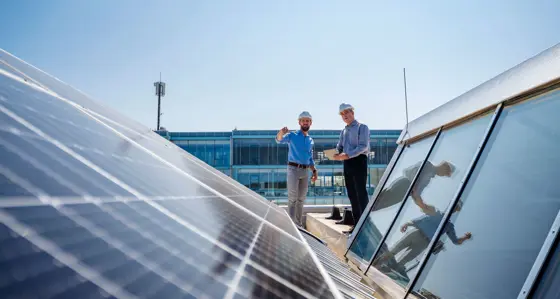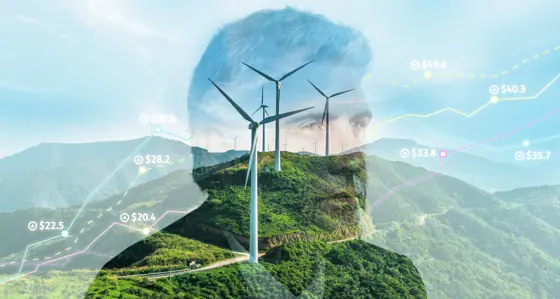PPAs are currently on everyone’s mind because of their popularity as a route to market for renewable electricity in a number of European countries. Being heavily involved in various PPA discussions, projects and negotiations, Baringa Partners organised an industry event in Düsseldorf for utilities, developers, investors and lenders to exchange ideas and opinions on the current developments of the European PPA market.
We heard from Dr. Henning Böttger from Baringa Partners, David Willemsen from Vestas, and Ingmar Helmke and Dr. Dirk Brunnberg from Aquila Capital. Presentations covered recent PPA market developments, key differences in PPA agreements and approaches towards the challenges in Europe and specifically in Germany.
Here are the key-takeaways from the event in case you missed it:
1. PPAs offer an alternative to the traditional subsidy-based mechanism. The number of PPAs have grown strongly over recent years, specifically in the Scandinavian countries, the UK, the Netherlands and most recently Spain and Portugal. Due to the lack of subsidy, many developers are going with the “PPA first” approach.
2. New and varied contracting structures have emerged, typically defined by the risk that each of the parties is willing to take on. CfD-type structures are becoming the most preferred structure in our experience.
3. Due to limited liquidity in the long term PPA market, Corporate PPAs have emerged as a potential alternative over the last few years, especially in Scandinavia and the UK. The appetite of corporations for long-term PPAs depend on a number of factors, e.g. renewable traceability, additionality, cost certainty and cost savings. These complex requirements make the preparations and negotiations of this type of PPA contracts typically a long process.
4. PPAs are not the only tool in the toolbox for risk management. Rather than optimising on a project-by-project basis, the portfolio could combine subsidy, PPAs and fully merchant projects. Participants agreed that active portfolio management for developers is becoming increasingly important.
5. This portfolio management approach will require a more sophisticated definition of risk appetite for developers, investors and lenders in order to be successful.
6. For Germany, PPAs are a valid alternative mainly for offshore wind projects with a “Stauchungsmodell” (a model that is available only for offshore wind involving an initial compensation of 19.4 ct/kWh for a total of 8 years) and large solar PV due to the existing subsidy scheme and current market design. For onshore wind coming out of the German Renewable Energy Sources Act (EEG), short-term PPAs (3-4 years) could offer additional revenues for the merchant tail, however there is a question as to why projects wouldn’t just manage the merchant tail risk themselves.
7. Due to the guaranteed revenue streams, EEG is still the dominant force in Germany, and changes to this regime would be required to incentivise PPAs more. Historically, the majority of German onshore wind projects were financed by citizen cooperation, resulting in projects that were small in size and well accepted locally. Large projects and large players setting up PPAs in Germany are somewhat in contrast with energy projects that are financed by citizen cooperations.
8. Feedback from the banks and investors in the room was that there is a need to understand the details of these new instruments better; they need to build-up and / or tap into external energy market fundamentals (e.g. price projections) and risk assessment capabilities (e.g. wind capture pricing, imbalance risk) for the markets where they target PPA projects.
9. PPAs are not going to turn an uneconomic project around. In Spain for example, we are observing a huge pipeline of projects that are competing against each other for potential PPAs, some not having good profitability prospects.
Are you working in PPAs? We would like to hear from you, and hear your perspective.
For more information on Baringa’s electricity price projections and PPA market knowledge, please contact Henning Bottger.
Related Insights

Balancing investor demands and competitiveness in Australian Storage CIS tenders
Given the potential scale of the CIS, storage market participants must refine strategies, governance, and bids for the market's new largest storage contract buyer.
Read more
European power markets: Navigating the new normal and looking to the future
How will the power markets evolve in 2024 and beyond? Watch the playback of this webinar to access our analysis.
Read more
The Japanese Government’s energy policy reforms offer substantial investment opportunities
Japan's energy market is undergoing an extensive transformation, aligned with the global move towards sustainable and renewable energy sources.
Read more
Financing the energy transition in a volatile market
We examine the recent disruptions that have affected the financing of renewable energy projects in Europe over the past 18 months.
Read more